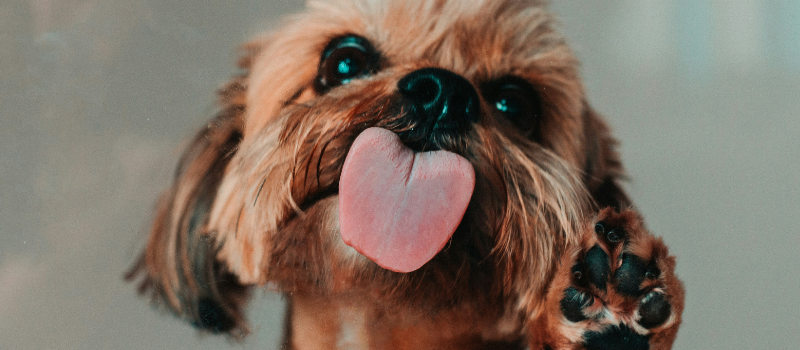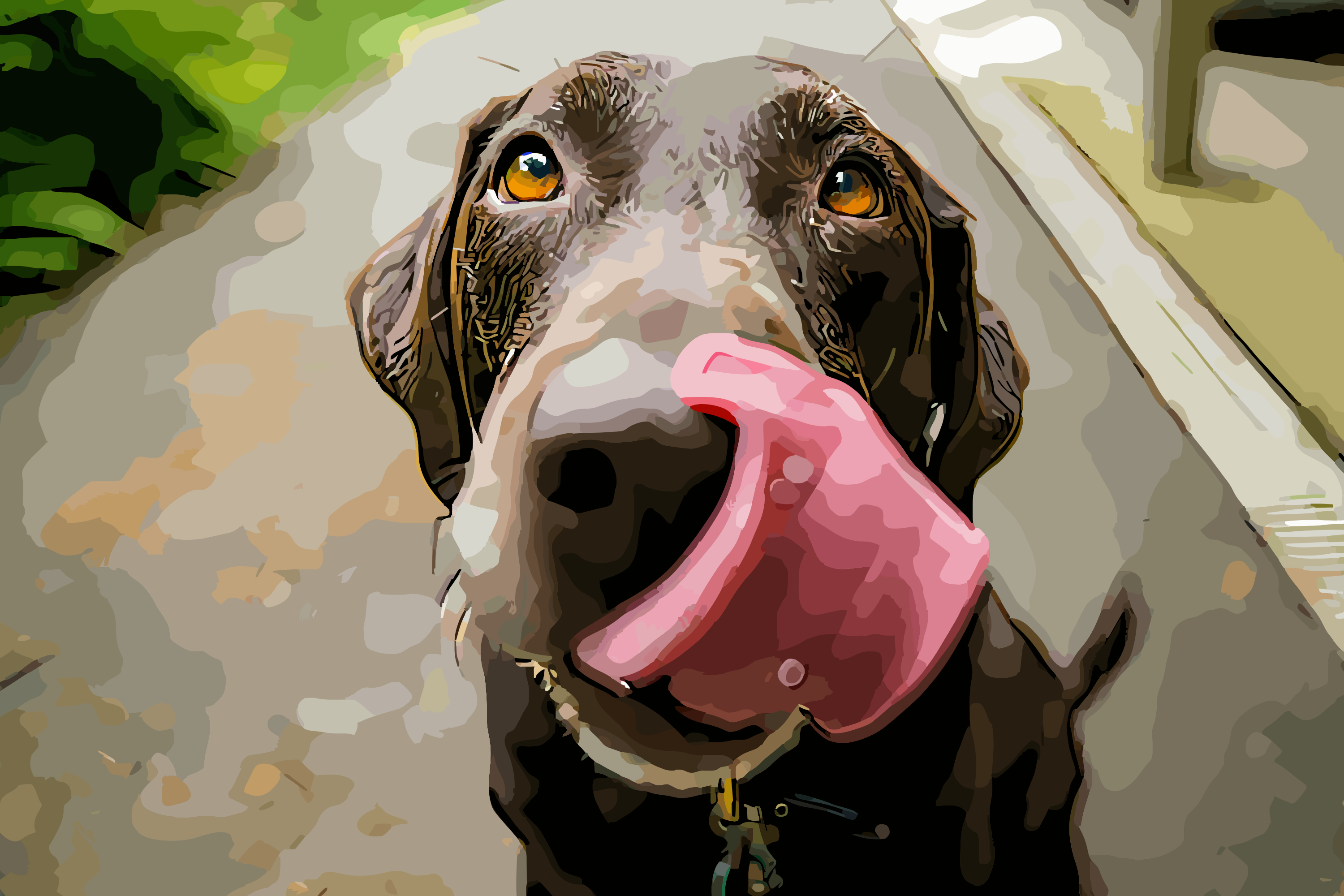You've been unconsciously trained. Just like Pavlov's dogs.
Think about the last time your phone buzzed with a notification. Did your heart rate spike just a little? Did you feel that tiny jolt of anxiety mixed with curiosity? Congratulations — you've been classically conditioned by a rectangle of metal and glass.
Or consider this: you walk by a Starbucks and immediately start craving coffee, even though you weren't thinking about caffeine two seconds ago. The smell, the sounds, the green logo. Yep, they've all become triggers that make your brain go "time for coffee!" without your conscious permission.
This is classical conditioning, where your brain learns to connect things that don't naturally belong together (then acts like this was perfectly logical all along).
Ivan Pavlov figured this out over a century ago using dogs, bells, and an impressive amount of drool. What he discovered was that our brains are basically very sophisticated association-making machines that can be programmed by repetition and timing.
For better or worse, once you understand how classical conditioning works, you'll start seeing it everywhere. And you might realize you have more in common with those drooling dogs than you ever wanted to admit.
Sorry (not sorry), but you’ve been warned.
What Is Classical Conditioning?

Classical conditioning is a learning process where your brain learns to associate two unrelated things, causing you to automatically respond to one stimulus the same way you'd naturally respond to another.
This is your brain's overly enthusiastic pattern-recognition system. It sees two things happen together repeatedly and decides, "These must be connected! I should probably react to both the same way."
Pair a neutral stimulus (something that normally doesn't make you react) with something that naturally triggers a response, do this enough times, and boom — the neutral thing now triggers the same response.
Your brain has officially been hacked.
Classical conditioning is also called "Pavlovian conditioning" because Ivan Pavlov was the first guy to formally document this process, though he stumbled into it completely by accident while trying to study dog digestion. (More on that delightful mishap later.)
The big insight that blew everyone's mind was that learning doesn't just happen through conscious effort or rewards. Sometimes your brain just...learns stuff automatically. It forms connections whether you want it to or not, creating automatic responses you never signed up for.
This is the reason you feel nostalgic when you hear certain songs, why you get nervous in dentist offices, and why marketers can make you crave a burger just by showing you golden arches.
Your brain: making connections since day one, asking permission since never.
Classical Conditioning vs. Operant Conditioning
Classical conditioning and operating conditioning get thrown around a lot, but let’s clear up any confusion.
Classical conditioning happens TO you, operant conditioning happens BECAUSE of you.
- Classical conditioning: Your brain makes automatic connections between things. You don't choose it, you don't control it, it just happens. Hear a song, feel sad. Smell cookies, get hungry. See your ex's car, feel your stomach drop.
- Operant conditioning: You do something, consequences happen, and you adjust your behavior accordingly. Touch a hot stove, get burned, stop touching hot stoves. Get a paycheck for showing up to work, keep showing up to work. This is learning through trial and error (or trial and "oh heck no, never again").
Classical conditioning is your brain playing connect-the-dots without asking. Operant conditioning is your brain playing "what happens if I do this?" and taking notes.
Meet Ivan Pavlov (the Accidental Genius)

Ivan Pavlov wasn't trying to revolutionize psychology. He was just a Russian physiologist with a strange obsession with dog spit.
Seriously. The man spent his days measuring exactly how much saliva dogs produced when they ate, because apparently that's what passed for exciting research in the 1890s. He even won a Nobel Prize for his work on digestion (nope, not psychology…digestion). The guy was basically the world's foremost expert on stomach juices.
But then something weird started happening in his lab. The dogs began drooling before they even saw food. They'd hear the footsteps of lab assistants bringing dinner and suddenly turn into furry little drool factories. At first, Pavlov was annoyed because this "psychic secretion" (his actual term) was messing up his carefully measured data.
Most scientists would've just ignored this inconvenient slobbering. But Pavlov had that rare combination of curiosity and stubbornness that turns accidents into breakthroughs. Instead of dismissing the early drooling as a nuisance, he decided to investigate why dogs were essentially getting excited about dinner before dinner existed.
This pivot from "why do dogs drool when they eat?" to "why do dogs drool when they think they're going to eat?" accidentally launched an entire field of behavioral psychology.
Pavlov was hunting for digestive secrets and stumbled into the operating manual for how brains learn associations. Not bad for a guy who just wanted to measure dog spit.
The Pavlov Experiment
So, how did Pavlov start documenting these psychology findings? Well, with an observation, a hypothesis, and an experiment (of course):
- Before Conditioning (The Setup): Pavlov started with a simple observation: show dogs food, they drool. This is what scientists call an "unconditioned response" — fancy talk for "this happens naturally, no training required." Dogs don't need a manual to figure out that food = drool time.
- During Conditioning (The Training Montage): Here's where Pavlov got creative. He started ringing a bell right before presenting food. Bell, then food. Bell, then food. Over and over. At first, the dogs were probably thinking, "Weird bell, but hey, free food!" and ignored the sound completely.
- After Conditioning (The Magic Moment): After enough repetitions, something clicked. Pavlov rang the bell...and the dogs started drooling. No food in sight. Just a bell making dogs produce saliva like they'd been hacked.
Take a step back and think about how bonkers this actually is. Pavlov essentially taught dogs that a completely arbitrary sound meant "food incoming" so convincingly that their bodies started preparing for a meal that didn't exist.
He turned a meaningless noise into a biological trigger.
The dogs weren't consciously thinking, "Oh, the bell means food is coming." Their brains just formed an automatic connection: bell sound = food preparation mode activated.
This was more than just a cute trick for pets, though. Pavlov had accidentally discovered a fundamental law of how brains learn to associate completely unrelated things. He'd found the code for programming automatic responses.
The Complete (and Sometimes Confusing) Classical Conditioning Vocabulary

Psychology loves its fancy terminology, but don't let the academic jargon get you hung up. It’s simple if you look beyond the actual vocabulary term.
- Unconditioned Stimulus (UCS): The thing that naturally makes you react. Food makes dogs drool, scary movies make you jump, your mom's cooking makes you hungry. Your body just knows what to do.
- Unconditioned Response (UCR): Your natural, automatic reaction to the UCS. The drooling, the jumping, the hunger pangs. This is your brain on autopilot, doing what it's supposed to do.
- Neutral Stimulus (NS): Something that initially does absolutely nothing interesting. A bell, a smell, a sound — basically the boring thing that shouldn’t have any power but does.
- Conditioned Stimulus (CS): The former neutral stimulus that's now been promoted to "trigger" status through repeated pairing with the UCS. The bell that now makes dogs drool, your alarm sound that now makes you stressed.
- Conditioned Response (CR): The learned reaction to the conditioned stimulus. It looks almost identical to the UCR, but now it's happening to the "wrong" trigger. Dogs drooling to bells instead of food, you getting anxious from your ringtone instead of actual emergencies.
Your brain took a perfectly innocent stimulus, gave it a makeover through repetition, and now it triggers responses it has no business triggering.
How You Experience Classical Conditioning in Your Daily Life
Your life is basically one giant classical conditioning experiment, but fortunately you're both the scientist and the lab rat.
That Pavlovian jolt when you hear your work Slack notification? Your brain has learned to associate that sound with "someone needs something from you RIGHT NOW" — even when it's just Karen sharing another cat meme. Your stress response doesn't know the difference.
Gosh dang it, Karen.
Walk into your favorite restaurant and suddenly feel hungry? The smell, lighting, and music have become conditioned stimuli that trigger your appetite before you even see a menu. McDonald's golden arches can visually trigger you to crave fries.
Your morning coffee routine is classical conditioning. The smell of brewing coffee starts waking you up before you've even had a sip. The ritual itself (the sound of the grinder, the warm mug in your hands) triggers alertness because your brain has connected these cues with incoming caffeine.
Even your emotional responses get conditioned. Certain songs instantly transport you back to high school heartbreak and specific perfumes remind you of your dear-dear grandmother.
How Classical Conditioning Actually Works in Your Brain
Now, you know what’s happening, but the deeper question is why.
Your brain is constantly setting up connections between things that have no business being together.
When you experience two things repeatedly at the same time, your neurons start forming physical pathways between them. The more you travel these routes, the faster and more automatic the journey becomes.
This happens in your amygdala (your brain's alarm system) and hippocampus (your memory center). They're pretty much gossipy neighbors who can't help but share information. When the bell rings and food appears enough times, these brain regions start chatting: "Hey, that bell sound usually means food is coming. Maybe we should start the drool process early?"
Once these neural pathways are built, they operate faster than your conscious thought. Scary, right? Your brain triggers the conditioned response before your logical mind even processes what's happening.
Timing matters too. The neutral stimulus needs to happen right before the natural trigger — not after, not way before. Your brain is picky about its association timeline.
It's your neural networks playing connect-the-dots with your life experiences to create automatic responses you never asked for.
Why This Matters (Beyond Scoring Well in Your Psychology Class)

Classical conditioning is the user manual for your brain, and it’s one of the few user manuals you should actually read.
- You're being conditioned constantly, whether you realize it or not. Every app notification, every advertisement, every retail environment creates automatic responses in your brain. That "ding" from your phone is a carefully crafted trigger designed to make you check your device. Understanding this gives you back some control.
- You can use it to build better habits. Want to exercise more? Lay out your workout clothes the night before so they become a visual trigger. Want to read more? Keep a book next to your coffee maker. You're basically using your own conditioning system to work for you instead of against you.
- It explains why you react the way you do. That inexplicable anxiety when you smell hospital disinfectant? The way certain songs instantly change your mood? The reason you feel hungry walking past your favorite restaurant? It's not random — it's your brain's association network doing exactly what it's designed to do.
- You can break unwanted conditioning. Understanding how these associations form means you can deliberately work to weaken them. That ex's cologne that still makes you feel sad? With awareness and effort, you can rewire those connections.
Knowledge is power, especially when that knowledge is about your own mental operating system.
Well, You're The Dog Now
Now that you know how your brain gets programmed, you can start reprogramming it. Pay attention to your automatic responses. Notice what triggers them. Question whether that anxiety spike when you see your boss's name is actually necessary, or if it's just your brain making connections it doesn't need to make.
Your brain will keep forming associations whether you're aware of it or not (that’s its job).
The question is: are you going to let random stimuli control your responses, or are you going to take the leash?
Time to train your own brain instead of letting it train you.
The bell's ringing. What are you going to do about it?
.png)


